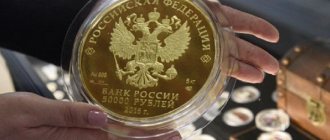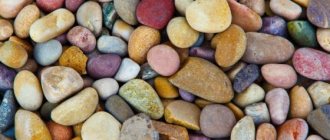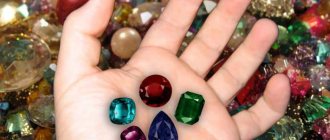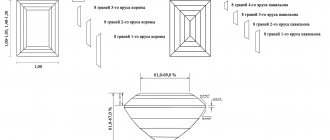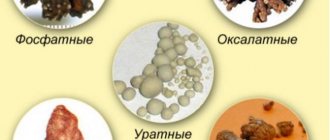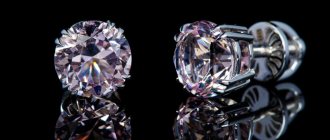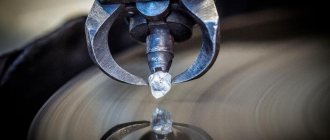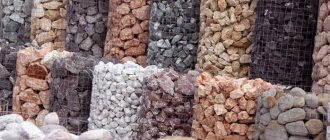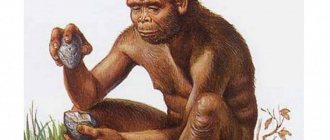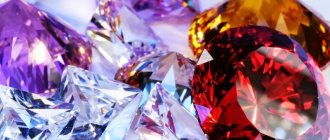Gravel and Pebbles: what is the difference between gravel and pebbles and what is the difference between pebbles and gravel
Pebbles and gravel
– differences hidden from prying eyes
First of all, it’s worth dwelling a little on their appearance. Each stone is a rounded element, however, if the pebbles are always clearly round and flat, then the natural roundness of gravel is no more than 80% of the total amount of mined material, and in addition to this, it has a more voluminous structure.
The nature of origin of each stone leaves an imprint on their color capabilities. If the place of widespread distribution of pebbles is a river and its color directly depends on the rock through which the corresponding river flows, then the specificity of the origin of gravel (it is one of the components of the sand and gravel mixture formed by the natural process of rock chipping) gives its color an indescribable variegation and originality combinations.
Quite often in construction, as an alternative to sifting gravel from sand, preference is given to using a sand-gravel mixture in its original form. However, non-scattered ASG have less decorative properties compared to gravel sieves and therefore, by their type, are more related to ordinary cheap building materials.
The size of the pebble stone or gravel mass is also an important characteristic. Large rounded pebble stones with a transverse size greater than 30 cm are classified as boulders, which are also used in elemental design and decoration.
It is especially worth emphasizing the use in the modern world of an artificial method of producing pebbles, where the original material, in an accelerated way, unlike natural ones, receives a rounded appearance, close to reality. This method is called tumbling. Obtained quite quickly, such tumbled stone has incredible value and is in wide demand.
Pebbles and gravel, the differences of which can be detected upon closer examination, also differ in their structure. In particular, if the chemical composition of pebbles is homogeneous, then gravel is almost always the result of a natural combination of several types of impurities (sand, granite, quartz, marble and others). The heterogeneous composition of the latter has a strong influence on its color range. The same cannot be said about pebbles: they have a more uniform tone in color.
And finally, attention should be paid to the scope of use of pebbles and gravel, the differences of which can be found here. In principle, in general, both materials are equally successfully used for decorative purposes. Gravel will be a wonderful decoration for the outlines of a marvelous pond, and pebbles will decorate its bottom. However, their use is not limited to this. Thus, pebbles have a resounding success and aesthetic value when covering walls and creating incredible mosaic designs or tiles. But preference for gravel will be given in the case when the issue, in addition to aesthetic parameters, also depends on the economic component. Gravel, due to the lowest labor costs during extraction and the shortest distance from the construction site, always beats pebbles in terms of price per ton.
Application
Craftsmen carve figures from river stones. Small boulders have found use in the bathhouse: they do not crack at high temperatures. For saunas, they choose eco-friendly and safe granite, which accumulates heat and perfectly maintains temperature.
Unusual stones that deserve a place in the collection include transparent, striped or the brightest colored stones. Often collectors are attracted by either the interesting design or shape of the specimen.
Such pebbles look impressive as a decorative element, in a transparent bottle, as an apartment decoration. The rarest are chalcedony, pearls, fluorite, quartz, and aventurine.
Types of gravel
This material has 3 main varieties according to the characteristics of its origin: mountain, glacial and water. The mountain variety of gravel occurs when rocks are destroyed under the influence of external factors. The river variety is associated with its accumulation in river beds, at the bottom of lakes and near the seashore. Under the influence of moving water and sand, pieces of rock are ground down to form gravel.
The glacial variety is associated with the movement of a glacier. When rocks are ground together, gravel is formed. Its particles in this case retain their rough shape. The internal structure of glacial gravel is relatively homogeneous. This material is used in various areas of construction, including those where increased demands are placed on structural strength.
In mountain gravel, the particle breakdown is even lower. It contains a large amount of clay, dust and other contaminants. It is often used in road construction, including when creating embankments and a reinforcing layer for railway tracks.
According to the characteristics of the material, it is divided into: construction, small, decorative, white, shungizite, silicon, rounded, washed.
Construction gravel can have various characteristics that do not go beyond the following values:
- particle size ranges from 3 mm to 7 cm;
- The density of gravel can be from 1.4 to 3 g/cm3.
The strength of construction gravel depends on its brand. The radioactivity indicator is also determined for it, on which the possibility of safe use in housing construction depends.
Decorative gravel is often used to create spectacular designs in garden plots. This gravel comes in a wide variety of colors.
Decorative gravel
White gravel is used in flower beds to make plants stand out more clearly against the general background. The garden area decorated with white gravel looks neat and elegant. In addition to its aesthetic function, it also helps in solving some problems: it reduces the likelihood of weeds, reduces cooling and overheating of the soil, reduces water evaporation, which allows you to reduce the frequency of watering, and accelerates the absorption of rain into the soil.
Pea gravel is a mass of grains of minerals and rocks, the diameter of which is less than 0.7 cm. It is mainly used in road construction. It is also mixed into concrete or used in landscape design. Pea gravel comes in a variety of colors and shades.
Shungizite gravel is considered a good thermal insulation material. It is used as a porous filler.
Silicon gravel is used as a filter for water that may contain harmful substances. Well suited for use in wells.
Particles of the same gravel can be representatives of different rocks and minerals. This is due to their different colors and other features. Also, pieces of this material vary in size and degree of smoothness.
The most common mineral in gravel is silica. Manganese, iron, potassium and other components are found in small quantities.
Washed gravel differs from its other varieties in the absence of unnecessary impurities. It is mined in rivers and on the seashore. Special technologies are used during extraction. It is mainly used to produce concrete.
Washed gravel
There are three types of river rounded stones
Cup of the “Unicum” club in the game “Brain-ring” 05/7/2000
Questions from the “Va-Bank” team
1. Geologists distinguish three types among river rounded stones: gravel - from 1 to 10 mm in diameter, pebbled stones - from 10 to 100 mm in diameter. What is the third type of stone called?
2. In 1885, geologist Suess described a new type of marks on stone. These are sawtooth scratches in soft rock from pieces of harder rock. The discoverer called these marks autographs. What?
3. Finish the KVN ditty: “In the impregnable Appalachians / the Apache leader rebelled. / He found and read. " What?
Answer: ". Marx's book "Capital".
4. These two women had a lot in common. Both were married, both were killed in the same way, the killer in both cases was the husband. In addition, the husbands lived very short lives after committing atrocities. But if the first one repented of what he had done and committed suicide, the second one was killed by a soldier of the Red Army. Name the names of the unlucky wives, if we learned about the second one thanks to a film made in 1970 by Voroshilov’s namesake.
Answer: Desdemona and Gyulchatay.
5. The Aborigines call this animal metoh-kangmi. The first part of the word “metokh” is an exclamation corresponding to the concept of “terrible, terrible.” What does the second part of the translation mean, “kangmi”?
Answer: “Bigfoot.”
6. The famous German traveler Erich von Däniken hypothesized that about two thousand years BC. Two nuclear explosions occurred at the mouth of the Jordan River. And which cities suffered from the explosions, according to Däniken?
Answer: Sodom and Gomorrah.
7. Mikhail Zadornov, having studied this poem, came to the conclusion that his hero is most likely a person of Caucasian nationality. The author of the question, having replaced the 13th letter in the first word with the 5th, established the nationality of the hero by reading the newly formed line. Having made a similar replacement, reproduce the newly formed line.
Answer: “The Jew was the only artist. “
Authors: 1, 2, 5, 6 – Mikhail Kalnitsky; 3, 4, 7 – Roman Teplyakov.
Questions from the “A-Mega” team
1. The translation of this phrase, made by M. Vronchenko, sounds like this: “You know, something evil happened in Denmark.” N. Polevoy translated it as follows: “I foresee disasters for the fatherland.” Name the most famous translation of this phrase.
Answer: “Everything was rotten in the Danish kingdom.”
2. They were both literary scholars and bibliographers. The first edition of their book was published in 1955, followed by a second, and then a third in 1966. Their names were Maria Grigorievna and Nikolai Sergeevich. What's their last name?
3. Everyone knows this phrase, attributed to Louis XIV, who allegedly said so at a meeting of the Paris Parliament in 1655. But in V.I. Lenin this phrase sounds different. How?
Answer: “The state is us.”
4. Finish Igor Guberman’s quatrain: “My firmament is crystal clear / And full of rainbow pictures. / Not because the world is beautiful, but because I am. “
5. What word in Russian comes from the French word “argo”, meaning “stolen language”?
6. What Henry Mencken said: “It's like war; it’s easy to start, but very difficult to stop”?
7. What did M. Prishvin call “the medicine for love”?
The author of all questions is Khemra Atabaev.
Questions from the Consistory team
1. At the entrance to Moscow in the 16th century there was Razgulyai Square, on which the royal “circle” was located. What was called “circling” then?
2. Not long ago, an original caricature appeared: a coachman in a zipun, broadcasting from a one-horse cart: “What can you do! There’s not enough for oats!” The plight of which establishment was discussed in this cartoon?
Answer: Bolshoi Theater.
3. Biographer Bernard Crick argued that the author never considered his work to be prophetic: he just wanted to show the abuse of power in a satirical form. Only the title of the work caused controversy, and then the writer suggested changing places. What?
Answer: The last two digits of the year, and 1948 became “1984.”
4. “Maha” translated from Sanskrit means “great”, “mantra” means “verse”. Chant the most famous Mahamantra.
Answer: “Hare Krishna, Hare Rama.”
5. Continue the words of the American actress Cher, spoken in the 1980s: “A film actor doesn’t need a great mind - just look at ours. “
Answer: ". President." (We're talking about Reagan).
6. “All art is autobiographical,” wrote Federico Fellini. What did he call the autobiography of an oyster?
7. Stalin, as you know, drove a specially made armored ZIS-110, Hitler - a custom-made armored Mercedes. But US President Franklin Roosevelt drove a confiscated armored Cadillac. Confiscated from whom?
Answer: Al Capone.
Authors: 1 – 3 – Vladimir Mkrtumov; 4 – 7 – Daniil Maikovsky.
Questions from the Deja Vu team
1. “We love people for the good that we have invested in them,” wrote Leo Tolstoy. Why, according to him, do we hate people?
Answer: For the evil that was done to them.
2. As Walt Streatiff said, radio is the only medium that no one has ever used to ruin it. What?
3. It was said that barely six of Einstein's contemporaries understood his theory. One of them, Max Planck, consoling Einstein, said: “New theories are never accepted. They are either refuted or their opponents are. ” Finish the thought.
4. Finish the joke. An ultra-fashionable young man turns to a Jewish tailor: “Could you make me a suit the color of coffee with boiling milk?” To which the tailor calmly inquired. About what?
Answer: “With or without sugar?”
5. Thousands of protesters in Seattle in early December 1999 destroyed windows of upscale supermarkets and restaurants. These people opposed the invasion of the American market by international transnational sharks, which resulted in lower wage standards, worsening job prospects, and damage to the environment. Among the opponents of globalization are not only proletarians, but also many small property owners. They are forced out of the market and forced to become hired workers. The respectable Washington Post compared the riots in Seattle with the seizure of a famous palace and ironically stated that “America has begun the transition from this to this.” If you guessed which palace we are talking about, then tell us where America began the transition from to what.
Answer: From capitalism to socialism.
6. What, according to the Polish satirist Stanislaw Jerzy Lec, would make an excellent business card?
7. Phrase from Andrei Knyshev: “The killer was acquitted because at the time of the murder he was in a different place and was busy with another matter.” Which one?
Answer: Another murder.
Authors: 1, 4 – Igor Borisov; 2, 7 – Dzhennet Atabaeva; 3 – Tatyana Voitovich; 5 – 6 – Dmitry Voitovich.
Characteristics of natural gravel
Basically, this material is classified according to characteristics that are important for the construction and operation of structures.
- Particle size. Based on this criterion, 5 categories of gravel are distinguished: with particle sizes from 0.5 to 1 cm, 0.5 - 2 cm, 1 - 2 cm, 2 - 4 cm, 4 - 7 cm.
- Strength and mechanical stability. They depend on the composition and crystalline structure of the particles and are of great importance when choosing this material for use in road construction.
- Impurity content. These mainly include dust and clay. The gravel extracted from mining and dry river beds has the most impurities, while the gravel extracted from water bodies has the least amount of impurities.
The content of harmful impurities is taken into account separately. Such impurities can significantly deteriorate the quality of concrete and cause corrosion. Some harmful impurities can be toxic and also affect background radiation.
- Resistance to temperature fluctuations.
Classification of pebbles by composition:
Depending on what types of stones are included in the composition of the river stone, pebbles are divided into the following groups:
- Sedimentary - the most common type of stone, is formed as a result of the settling of organisms and further compaction. These are fragments of marble, sandstone, limestone.
- Metamorphic - metamorphic pebbles are formed in places where lithospheric plates have emerged to the surface, and due to erosion, the stone ends up in rivers or coastal zones.
- Igneous - Igneous pebbles consist of rocks formed by volcanic activity. It can be granite, basalt, feldspar, quartz, pumice, obsidian. It is worth remembering that igneous rocks have a natural radiation background.
Main areas of use
The ease of extraction and the high prevalence of natural gravel make it available for use in various areas.
Most often this material is used for the production of concrete. This is especially true for quarry gravel, the particles of which have an uneven surface and resemble pieces of rock, rather than smooth, rolled pebbles. Such gravel binds better to concrete, which gives the latter high strength. The second condition for using gravel for concrete production is resistance to alkaline environments.
It is also often used in the construction of roads and railways. At the same time, it must satisfy such requirements as strength, mechanical and temperature stability.
The use of gravel for decorating garden plots and flower beds is gaining momentum. The fine fraction of this material is used to fill paths and rest areas. In this case, it is necessary that the gravel grains are smooth and rolled. The variety with larger particles is used to improve the appearance of ponds, flower beds and squares.
Gravel for the garden
Terminology [edit | edit code ]
Dictionary and monographic definitions of the term (word) “roundness” are very different, since even the concept of “sedimentary rocks” is not entirely unambiguous among different researchers, just as the term (word) “fragment” is not unambiguous in cases where the researcher is dealing with clastic sedimentary rocks. However, in field geology it is constantly necessary to use the concept of “roundness” when describing sedimentary matter. In this case, the roundness itself is determined, of course, visually, by deductively comparing a particular fragment with a regular geometric figure (sphere, ellipsoid), and deviations from these figures.
Therefore, despite the fact that there are all kinds of quantitative scales and roundness coefficients, the following qualitative definitions are usually used in the field:
- a completely rounded
fragment (boulder, pebble, gravel, etc. down to individual grains of sand); - well and medium rounded
fragment; - poorly, or weakly rounded
fragment; - unrounded (very unrounded)
fragment (block, debris, crushed stone...).
This approach, which is very common in field conditions and in the scientific literature, requires a highly qualified performer, but is quite sufficient to determine the genesis of a rock, given that the description also indicates its other structural and textural features, and in geomorphology, the objectivity of the reconstruction can often be controlled and the genesis of the relief, which is composed of the desired sedimentary rock.
What are the differences between gravel and crushed stone?
Gravel and crushed stone are pieces of minerals and rocks. Their main difference is related to receiving. Gravel is obtained by direct extraction, without mechanical transformation. Its formation depends entirely on the action of natural forces.
To obtain crushed stone, larger fractions of rocks are used. These pieces are then crushed, resulting in the formation of crushed stone. Externally, it differs from gravel in the large number of sharp corners and lack of rolling. The material for its production can be rock dumps, waste, rock blocks.
Materials used in the article:
https://www.teh-stroy.ru/st_graviy-galka-otlichiya-graviya-i-galki-raznitsa-mezhdu-galkoy-i-graviem.php
https://1nerudnyi.ru/gravij-ego-osobennosti-svojstva -i-sostav/
https://belagrotorg.ru/stati/3105-kak-khranit-kartofel-esli-net-pogreba
In Garden
Add a comment Cancel reply
They say that few of his contemporaries. ***
Yana Nikishina: literary diary
Lermontov hated showing off and, as one of his contemporaries writes, who had the opportunity to talk with people who knew him well, he was truly devoted to a small number of his friends, and in dealing with them he was full of feminine delicacy and youthful ardor. “That’s why, to this day, in the remote regions of Russia you will still meet people who talk about him with tears in their eyes and keep things that belonged to him, more than jewelry.” These lines are taken from an article by writer A.V. Druzhinin, who highly appreciated the poetry of Lermontov. Having visited the Caucasus, when the memory of him was still fresh there, Druzhinin became closely acquainted with one of the poet’s friends and colleagues, Rufin Dorokhov. And in addition to the cursory impressions presented on the pages of the magazine, Druzhinin wrote in 1860, based on these stories, a large article about Lermontov’s poetry. At one time, this article remained unpublished and was discovered only now, a century later, and is known to few people. Meanwhile, we find in it an explanation of many of Lermontov’s personality traits and the mysteries of his fate. This article sheds some light on the incomprehensible creative feat of Lermontov, who, in just over four years after the death of Pushkin, created the greatest works of romantic poetry “Demon”, “Mtsiri”, the epic “Song about Tsar Ivan Vasilyevich”, full of subtle irony in relation to himself and to the romantic direction in literature, a poem that he called “A Fairy Tale for Children,” and the brilliant novel “A Hero of Our Time,” which marked the beginning of Russian psychological prose, a collection of poems that signified a whole period in the history of Russian poetry, and another collection of poetry, which Lermontov saw in print I didn't have a chance. Not only his brilliant poetic gift, but also his great aspiration, powerful creative will, and constant burning helped him fill every moment of his short life with creativity. “By nature, destined to rule over people,” our poet begins and crosses out Druzhinin. “By nature, proud, focused and, moreover, distinguished by strength of character,” he continues the characterization he began, “our poet was ambitious and proud, secretive.” “Lermontov, barely out of childhood, endured the disfavor and exile that followed the poet’s first exploit in the same way that everyday hardships are endured by people of iron character, destined for struggle and dominion.” How clearly these lines testify to the fact that Lermontov, more than anyone else, -or another during his lifetime, except perhaps V.G. Belinsky, understood his own significance and the role that he was destined to play in Russian literature and - moreover, in the life of Russian society! For the first time, we learn with such clarity from this article that in the Caucasus, among unprivileged people, Lermontov had true friends, that he was famous not only in literary salons and among a wide circle of his admirers in both capitals, but also in “the entire Caucasus” . “Most of Lermontov’s contemporaries,” Druzhinin continues, “even many of the people associated with him by kinship and affection,” speak of the poet as a bilious, angular, spoiled creature who indulged in the most unapologetic whims, “but alongside the myopic views of these eyewitnesses there are reviews of a different kind, reviews from people who were proud of Lermontov’s friendship and who valued this friendship above all other connections. According to Dorokhov, its author talks about Lermantov’s habit of concentrated daydreaming, preserved from childhood, and about another feature that he diligently hid. “Lermontov was a clumsy boy for a long time,” writes Druzhinin, “and even in his youth, going out into the world, having the fame of a lion writer throughout the Caucasus, he could not get rid of shyness, which he only covered up with either coldness or mocking gloom of his methods.” The world of art, Druzhinin notes, was a shrine and a citadel for him. Where nothing unworthy was given access. “Proudly, modestly and nobly he made his short journey among the figures of Russian literature,” says this article, surprising in the abundance of subtle and true thoughts about Lermontov’s poetry and vivid impressions received from a friend and eyewitness who shared the dangers with the poet in bloody battles and hardships on long hikes. The more diligently we read into the lines of memories that have reached us, the more convinced we are that Lermontov really was different and dissimilar - among the light that was merciless to him and in the circle of intimate friends, in public and alone, in battle and in a St. Petersburg living room, in a moment of poetic inspiration and at the hussars' feast. This can be said about everyone, but with Lermontov the facets of his character were outlined especially sharply, and few people aroused so many contradictory rumors about himself.
New theories are never accepted or refuted by their opponents. Memories
They say that all writers sooner or later start writing memoirs. Working in the science fiction genre, I considered myself insured against this, and suddenly...
In front of me is a clear photograph taken by our photographer of the Central House of Writers A.V. Parkhomenko. There is a group of writers on it, my fellow writers. In the foreground is the poet Semyon Kirsanov, in the back row are Leonid Sobolev, Georgy Tushkan, Boris Agapov. In the center of the group in front of me, who conducted this meeting, stands a very elderly man next to his caring wife. He has a tired face with a large mouth and high forehead, lively, sharp eyes.
This is Niels Bohr, the great physicist of our time, one of the founders of modern physical science, as well as one of the creators of the first atomic bomb. He romantically fled on a sailboat from Nazi-occupied Denmark. He created the Copenhagen School of Scientists, which any outstanding physicist of the first quarter of the 20th century considered it an honor to attend.
Niels Bohr said then at a meeting with Soviet writers that a crisis was brewing in physics. Crisis “from an overabundance of knowledge.” A situation arose similar to the end of the 19th century, when, it would seem, all physical phenomena were explained, the patterns found were expressed in the form of Newton’s mechanics and Maxwell’s theory of the electromagnetic field. All experiments confirmed the prevailing theories. All except one, except Michelson's experiment, which, as is known, proved that the speed of light does NOT DEPEND on the speed of the Earth's movement. It seemed impossible to explain this paradox. Some people would like to turn a blind eye to him. But a man appeared with a “crazy,” as Niels Bohr said, idea—Einstein! He put forward the theory of relativity and overturned all the previous ideas of physicists. He created a new foundation for the temple of knowledge, which was ready to collapse, onto which this temple now had to be moved. Michelson's experiment has been explained. But at what cost! At the cost of abandoning conventional ideas in the name of the fact that the laws of nature operate equally in all conditions. This simple and indisputable position led to unexpected and puzzling paradoxes, which not all physicists understood and accepted. It was said then that hardly six of Einstein's contemporaries understood him. Among them was Max Planck, who introduced the concept of quantum. He was the first to support Einstein, consoling him that “new theories are never accepted. They are either refuted, or... their opponents die out.” However, Einstein was not at all worried whether his theory was recognized or not. He was so sure that he was right that he just shrugged his shoulders at the misunderstanding of his thoughts. But his thoughts were truly “crazy,” from the point of view of conservative minds, of course. That is why they played such a big role in the development of science.
